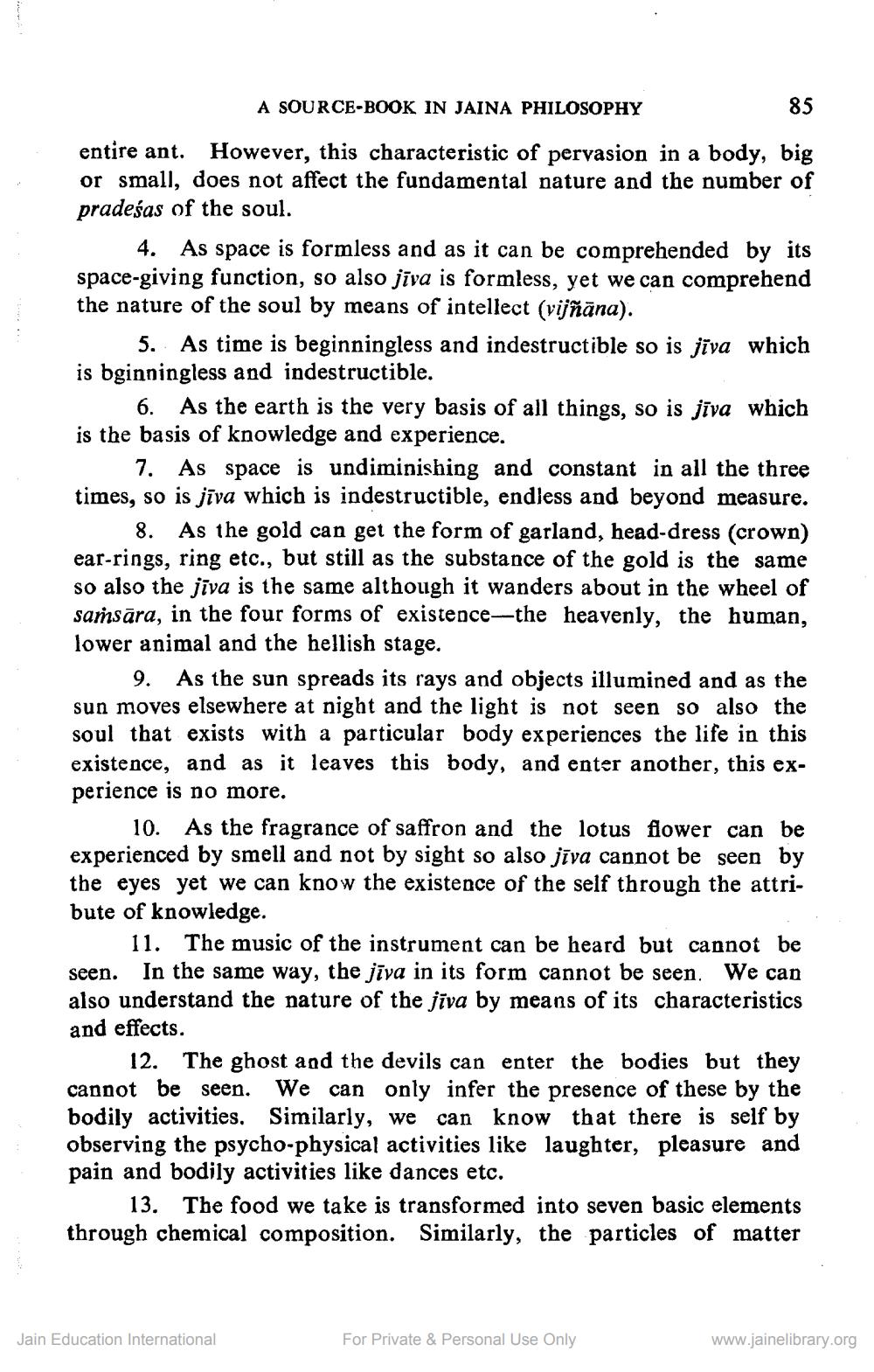________________
A SOURCE-BOOK IN JAINA PHILOSOPHY
85
entire ant. However, this characteristic of pervasion in a body, big or small, does not affect the fundamental nature and the number of pradeśas of the soul.
4. As space is formless and as it can be comprehended by its space-giving function, so also jīva is formless, yet we can comprehend the nature of the soul by means of intellect (vijñāna).
5. As time is beginningless and indestructible so is jiva which is bginningless and indestructible.
6. As the earth is the very basis of all things, so is jīva which is the basis of knowledge and experience.
7. As space is undiminishing and constant in all the three times, so is jīva which is indestructible, endless and beyond measure.
8. As the gold can get the form of garland, head-dress (crown) ear-rings, ring etc., but still as the substance of the gold is so also the jīva is the same although it wanders about in the wheel of saṁsāra, in the four forms of existence—the heavenly, the human, lower animal and the hellish stage.
9. As the sun spreads its rays and objects illumined and as the sun moves elsewhere at night and the light is not seen so also the soul that exists with a particular body experiences the life in this existence, and as it leaves this body, and enter another, this experience is no more.
10. As the fragrance of saffron and the lotus flower can be experienced by smell and not by sight so also jīva cannot be seen by the eyes yet we can know the existence of the self through the attribute of knowledge.
11. The music of the instrument can be heard but cannot be seen. In the same way, the jīva in its form cannot be seen. We can also understand the nature of the jīva by means of its characteristics and effects.
12. The ghost and the devils can enter the bodies but they cannot be seen. We can only infer the presence of these by the bodily activities. Similarly, we can know that there is self by observing the psycho-physical activities like laughter, pleasure and pain and bodily activities like dances etc.
13. The food we take is transformed into seven basic elements through chemical composition. Similarly, the particles of matter
Jain Education International
For Private & Personal Use Only
www.jainelibrary.org




